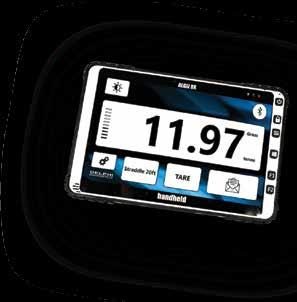ALCOHOL AND DRUG AWARENESS
$6 BILLION HANGOVER IN THE WORKPLACE BECAUSE OF ALCOHOL AND DRUGS since the body was formed, with more 200,000 people accessing ADA support services. Another 70,000 Australian workers are expected to attend ADA training sessions over the next 18 months. ADA Australia workshops are conducted by presenters with “lived experience” of the personal and public risk of alcohol and drug dependence. This includes:
The cost in lost productivity due to misuse of alcohol and drugs in the workplace sits at $6 billion per year, according to industry statistics referenced by Alcohol and Drug Awareness Australia (ADA Australia), with 2.5 million working days lost. Digging deeper, 10 per cent of workplace deaths are drug or alcohol related and factor in 25 per cent of workplace accidents. Sixty-one per cent of full-time employees report frequent use of drugs or alcohol. Ten per cent of workers have reported negative experiences with drug or alcohol affected co-workers. ADA Australia was launched in the hope of greatly reducing those statistics through greater awareness – with an accent on connecting with people with problems before they hit rock bottom and deeper mental problems develop. As ADA sees it, drug and alcohol misuse reaches into every corner of the Australian community – into workplaces, families, sporting clubs, and professional life. And, alongside, sit the accompanying disorders of depression, anxiety and selfharm. Co-founder and non-executive chairman Anthony Pettiona says: “If we are to get to the nub of the misuse of drugs and alcohol, we have to first accept that this is a cultural thing we are up against. “That means we have to change our ‘thinking’ around these substances, in the way we use them, in the ways they are ‘modelled’ socially and in the media, and in the modelling we do in front of our children. “At ADA Australia, we believe that by building awareness of the health impacts,
42
INDUSTRYUPDATE.COM.AU
the effects on family and financial security, and the social and workplace impacts, can we begin to address the problem,” Mr Pettiona said. ADA Australia specialises in training sessions in the workplace, providing positive strategies for ensuring the health, safety and welfare of all employees, co-workers and the community. It also conducts counselling support through to rehabilitation referrals, as well as workplace mental health training.
For companies, ADA Australia also provides assistance in developing a consultative, compliant drugs and alcohol policy as part of a best practice Workplace Health and Safety Management Plan Employers have a duty of care under the Australian Work Health and Safety Act (2011) to provide a workplace that is free from hazards associated with the misuse of drugs and alcohol. More than 30,000 workers have attended ADA workshops in the four years
•
Education for increased awareness of the physiological and psychological impact of drugs and alcohol, how these substances impair workperformance and judgment, and the long and short-term damage to vital organs (and to financial security).
•
Development of positive preventative practices for a safer working environment
•
Education and awareness to promote better life choices (around drugs and alcohol) for better health and wellbeing.
•
Strategies for dealing with alcohol and drug issues on the worksite (with co-workers, customers or contractors), for fostering an open supportive workplace culture and for best-practice processes and policies to ensure the well-being and safety of affected individuals and co-workers.
TIPS FOR MINIMISING THE HARMS FROM ALCOHOL CONSUMPTION • Drink water or other non-alcohol beverages between alcoholic drinks • Avoid drinking in rounds with friends, as you may end up drinking more than planned • Order smaller serves of beer, cider and spirits; rather than pints or double serves • Don’t allow others to top up your glass if you’re sharing a bottle of wine as you may lose track of how many drinks you’ve consumed • Avoid high-alcohol content beverages, such as stronger beers or wines, and spirits • Eat some food before and while drinking, to slow your drinking pace and slow the absorption of alcohol
• Occupy yourself while drinking to reduce the amount you’re consuming: play pool, sing karaoke, dance, talk to friends. Avoid combining alcohol with other drugs, including pharmaceutical and illicit drugs Alcohol is a depressant drug. Consuming alcohol with other depressant drugs such as benzodiazepines, GHB, ketamine or opioids can increase the risk of overdose and cause loss of consciousness, nausea and vomiting.8 Combining alcohol with stimulants such as cocaine, amphetamines or MDMA can also be dangerous, as both alcohol and stimulants can cause dehydration. Additionally, some stimulants can mask the effects of alcohol, leading people to drink more.9
Don’t leave drinks unattended Drink spiking occurs when a person deliberately adds alcohol or another drug to a drink without the knowledge of the person who will be drinking it. Alcohol is the most common substance used to spike someone’s drink, by adding alcohol to a non-alcoholic drink, or making it stronger.10 To reduce the risk of drink spiking: • avoid sharing drinks • buy or pour your own drinks • don’t accept drinks from strangers unless you are at the bar and can observe it being poured • don’t leave your drink unattended • keep an eye on your friends and their drinks
NOVEMBER 2020






